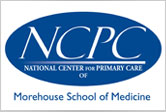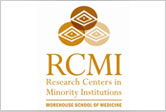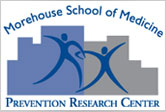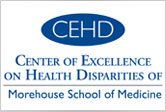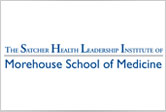Research Centers and Institutes and Research Resources
Research Centers & Institutes |
Research Resource Centers |
||||||||||||
|
|
||||||||||||
|
|
||||||||||||
|
|
||||||||||||
|
|
||||||||||||
|
|||||||||||||
|
|||||||||||||
Study Manager
Sign In (Requires Internal MSM/VPN Access)
The Study Manager Clinical Trials Management Software is a complete end-to-end solution for managing clinical trials, and provides a scalable, efficient and sustainable clinical-trial infrastructure. Study Manager allows the tracking of clinical trial progress and financial information, with access to real-time project information such as patient tracking, recruitment, enrollment statistics, and financial data. This results in improved operational efficiency and revenue collection, two of the most important factors in conducting clinical research successfully. The CRC's study manager contains four databases that include the recruitment database.
The Recruitment Database
This is a secure, privacy protected database that offers MSM investigators the ability to gain access to the recruitment community members that have agreed to participate in MSM trials. Recruitment of participants into the database is facilitated by the recruitment and retention core of the Clinical Research Center (CRC). At this time, the database contains over 3,000 names of potential participants, who have agreed to participate, as well as active protocol participants, and recurrent participants. It includes the participants' demographic information and medical profile; utilizing stringent HIPAA guidelines. This database in turn, is able to generate letters of invitations for trial inclusion and allows the interviewer to initiate and monitor daily trial schedules.
To obtain confidential information for a query, a "Recruitment Request for Data Form" should be completed. This form will require signature from the Principal Investigator on the study. The form will address Request for Waiver of HIPAA Privacy authorization for Research so requester may select reason for wavier of authorization.
Click here for Wavier Authrozation form.
EMR-Linked/i2b2 Platform
What is i2b2?
i2b2 is an acronym that stands for “Informatics for Integrating Biology and the Bedside.” It is an NIH-funded National Center for Biomedical Computing (NCBC) devoted to translational research (http://www.i2b2.org).
More specifically, it is a scalable, open-source informatics framework and architecture that can be used to host a research data warehouse. This architecture consists of two major pieces. The first is the back-end infrastructure (the “Hive”) that takes care of things like security, access rights, and managing the underlying data repository. The second piece is an application suite of query and mining tools that allows users to ask questions about the data (the workbench). The system was first developed within the Partner’s HealthCare system in Boston at MGH. It served as the architecture for their Research Patient Data Registry (RPDR).
What is the MSM Clinical and Translational Research Data Repository (CTRDR)?
The MSM CTRDR, also known as the i2b2 repository, is a centralized research data repository that is designed to integrate data from data sources that range from electronic health records and lab results, to genetic and research data, as well as other public sources such as birth registries, and government data like Medicaid. The CTRDR is an IRB approved limited (i.e. not completely de-identified) data repository built on the i2b2 database architecture. This architecture ensures that researchers do not have access to identified data until approval from the IRB
The i2b2 repository is intended to serve the MSM research community.
What are the potential benefits of the i2b2 repository?
By integrating data from many of the Institution’s clinical and research sources, the Biomedical Informatics Unit will be able to provide investigators with a more complete view of a patient than might otherwise be possible.
The potential benefits of this project are enormous. For the first time, researchers and investigators will be able to directly query a large data repository for the purposes of cohort identification and hypothesis generation. At the same time, we will be able to augment many existing research databases with a wealth of clinical information that was previously unavailable, allowing investigators to draw new insights and conclusions as they perform their data analysis.
Researchers will be able to run queries and perform simple data analysis on the limited data for the purposes of cohort identification and hypothesis generation. If an investigator identifies a suitable cohort or a promising avenue of researcher, they can request access to the fully identified records of those patients through the IRB.
How can l access the i2b2 repository?
Authorized user: Please click here.
Non Authorized use, please click here to a submit BIU services request.
Access to the i2b2 workbench is obtained by submitting completing a Biomedical Informatics Unit request form. After access is granted, the user will be assigned a user name and password by the database administrator. Any MSM faculty member can request an i2b2 repository account. Access for other research staff will be granted, but a supervising faculty member must first approve the request. These staff members will be placed in a user group with the supervising faculty, who assumes all responsibility for the collective actions of the group.
The repository would be accessed primarily through a web-browser, allowing users to identify and analyze patient cohorts. We also plan to allow them to download extracts from the repository for off-line analysis and hypothesis generation, assuming they have signed a Limited Data Use Agreement form.
There are three primary routes for users to access data in the i2b2 repository:
i) Using the web-based Workbench, which handles user authentication and provides automated query, export and analysis tools.
ii) By consulting with the BIU team to create specialized queries and reports based on their data needs.
iii) Through project-specific data marts that integrate an investigator’s research database with other clinical data from the general i2b2 repository.
Research in Comparative Effectiveness
Morehouse School of Medicine (MSM) in collaboration with the Univ. Rochester Medical Center has recently received funding from NIH/NCRR to enhance the community physician's capacity for collaborating in comparativeness effectiveness research (CER). The Research in Comparative Effectiveness (RICE) Network funding will provide the opportunity for MSM faculty and community physicians to transform the Community Providers Network (CPN) into a state-wide Practice-Based Research Network (PBRN) for innovative CER work to determine which health care interventions work best, for whom, and under what circumstances.
The gold standard Randomized Control Trials (RCT) do not sufficiently capture the health-related experience and needs of underserved populations. In contrast, CER provides researchers the opportunity to systematically evaluate both the risks and benefits of two or more medical services, drugs, devices, therapies or procedures in routine clinical practice, and subsequently, transfer the knowledge gain faster and more efficiently into real-world settings for greater benefits to the consumer of healthcare. Defined as “the generation and synthesis of evidence that compares the benefits and harms of alternative methods to prevent, diagnose, treat, and monitor a clinical condition or to improve the delivery of care”, CER has tremendous potential to the mission of MSM of providing healthcare solutions to the medically underserved urban and rural communities we serve.
The RICE Network at MSM will:
- Enhance the infrastructure of the MSM –CPN partnership to conduct CER
- Provide the technical support and assistance community physicians need to enhance their practice infrastructure for CER
- Offer an online training in CER leading to a research associate certificate and CME credit. Available topics include:
- Introduction to PBRNs
- Describe the importance of Practice-Based Research (PBR)
- Describe the types of research that may take place in primary care practices and the levels of engagement of practice clinicians.
- Describe the role of Practice-Based Research Networks in PBR
- Overview of CER
- To understand how comparative effectiveness research(CER) can improve quality care
- To describe CER in the context of evidence based practice
- To integrate value based assessment of health outcomes in diagnosis and treatment
- To participate in CER as a core practice improvement process
-
Health Literacy & Communication
- To understand the importance of health literacy in doctor-patient communication
- To recognize the consequences of low health literacy on patient care outcomes
- To recognize the role of health literacy in meeting public health service goals
- To identify practical strategies for improving health literacy
- Principles of Cost Effectiveness/Cost Benefit Analysis
- To address gaps in knowledge and attitude among practicing physicians and trainees regarding the basic principles of cost effectiveness in health care delivery in a variety of clinical settings including office based practice and clinical teaching at the bedside.
- To link curricula on cost effectiveness analysis with existing curricula on cultural competency and curricula on teaching about ethnic and racial disparities in health care to better address clinical decision making that impacts ethnic and racially diverse patient populations.
- Assessment of Quality of Life/Patient Satisfaction
- To construct/create a working definition of patient satisfaction.
- To justify why patient satisfaction is important.
- Identify the determinants of patient satisfaction.
- To measure patient satisfaction in clinical practice.
- To identify constructs of the concept of Quality of Life (QOL).
- To select QOL measures are potentially useful in both the clinical encounter and in quality improvement.
- To assess when measurement of QOL can guide clinical decision-making.
- To evaluate Quality of Life (QOL) in clinical practice.
- Overview of Clinical Decision Analysis
- To provide an overview and open discussion among the participants on current clinical decision analysis tools and processes, challenges and opportunities.
- To present systems modeling, simulation and process optimization tools, and illustrate to participants how they can be used for effective clinical decision analysis.
- Collection and Analysis of Data for Clinical Design Analysis
- To train internal medicine and family practice residents on how to collect data for quality care using the respective registries at Grady hospital and Family Medicine.
- To learn how to formulate relevant clinical questions for analysis.
- To integrate comparative effectiveness skills building in clinical design and analysis.
-
Overview of Guideline Implementation Research
- To understand the process and evidence basis of guideline development.
- To describe the relevance of practice guidelines to clinical practice.
- To develop practice specific and patient demographic specific tools for guideline implementation.
- To design practice specific feedback processes that will inform and improve practice guidelines.
-
Use of HIT and Decision Support
- To provide open discussion among the participants on the definitions and scope of Health Information technology (HIT) and Decision Support.
- To identify and discuss the uses of HIT and Decision support in health care.
- To work on a practical healthcare problem to illustrate how health information technology can enhance its outcome.
-
Ethical & Regulatory Aspects of Clinical Research in PBRNs
- To ensure the naïve learner understands the importance of HSPP training and certification.
- To describe 14 principles of responsible conduct of research.
- To describe the statutory, regulatory and policy requirements of proper conduct of research.
- To prepare the learner to recruit within a PBRN.
-
Designing RICE Studies for PBRNs
- To understand how to conduct Research in Comparativeness (RICE) studies in PBRN.
- To describe potential relevant questions for research design.
- To develop data collection techniques using practices’ electronic and personal health records.
- To understand how to manage data and protect patient confidentiality in RICE studies.
-
Managing Your PBRN Research Projects
- To evaluate PBRN projects for feasibility.
- To identify practice resources important for conducting research.
- To evaluate study contracts for feasibility.
- To list 7 essential steps in project management.
-
Community Engagement
- Formulate a definition of community for local research interests.
- Define community engagement.
- Compare & contrast techniques for community engagement.
- Apply principles of community empowerment to case analysis.
-
QI Module for Practice Managers
- To improve both productivity and effectiveness of the practice.
- To facilitate the practice for PBRN.
- To identify technology skills required of the Physician Practice manager in the present day medical practice.
- To implement Patient-centered Medical Home in the practice
- Introduction to PBRNs
- Plan and conduct research with the local physician network to demonstrate readiness for CER in diabetes
Widespread enthusiasm for CER has been steadily building partially in response to the federal government’s unprecedented investment in CER and as a result of patients, providers and payers realizations that the newest and most expensive innovations are not necessarily the best solutions. In some areas, closing the health information gap particularly for underrepresented and underserved populations will require primary CER which generates new best-practice evidence. In other cases there may currently be sufficient existing evidence which can be synthesized to generate credible secondary CER for healthcare decisions.
The RICE Network creates a model “laboratory to improve the quality of care and reduce disparities’’. Harnessing the resources and opportunity provided through the RICE Network for CER will undoubtedly provide a unique opportunity to shape the next wave of informed health care decision-making.
Program Contacts:
Robina Josiah Willock, MPH, PhD
Robert Mayberry, PhD
Priscilla Pemu, MD, MS



